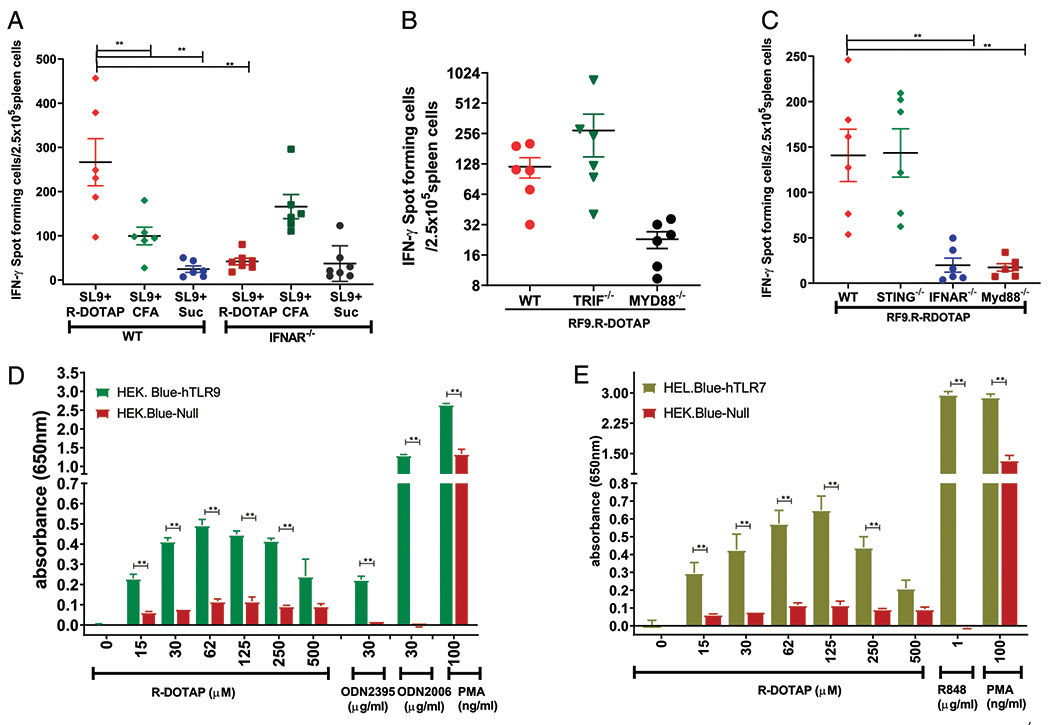FIGURE 7.

R-DOTAP mediates its CTL-inducing effects by activating type I IFN in a Myd88-dependent manner. (A) Wild-type (WT) or IFNAR−/− mice were injected on days 0 and 7 with the OVA SL9 peptide admixed with R-DOTAP (SL9+R-DOTAP), SL9 peptide emulsified with CFA (SL9+CFA), or SL9 in sucrose (SL9+Suc), and ELISPOTs were performed against the SL9 peptide on day 14. (B) WT, TRIF−/−, or MYD88−/− mice were injected on days 0 and 7 with the RF9 peptide encapsulated in R-DOTAP nanoparticles (RF9.R-DOTAP), and ELISPOTs were performed against the RF9 peptide on day 14. (C) WT, STING−/−, IFNAR−/−, or Myd88−/− mice were injected on days 0 and 7 with RF9 peptide encapsulated in R-DOTAP nanoparticles (RF9.R-DOTAP), and ELISPOTs were performed against the RF9 peptide on day 14. Data represent the mean ± SD of peptide-specific IFN-γ–producing cells in spleens from treated mice (n = 5). (D) HEK-Blue null, HEK-Blue human TLR9, and (E) HEK-Blue human TLR7 reporter cells were stimulated for 24 h with the indicated concentration of R-DOTAP nanoparticles, ODN2006 or ODN2395 (D), R848 (E), or PMA; the cell supernatants were assayed for SEAP activity using QUANTI-Blue reagent; and the background subtracted relative absorbance in triplicate wells were plotted. Data represent mean absorbance ± SEM of triplicate cultures, and all experiments were repeated at least two times with similar results. **p < 0.05.
